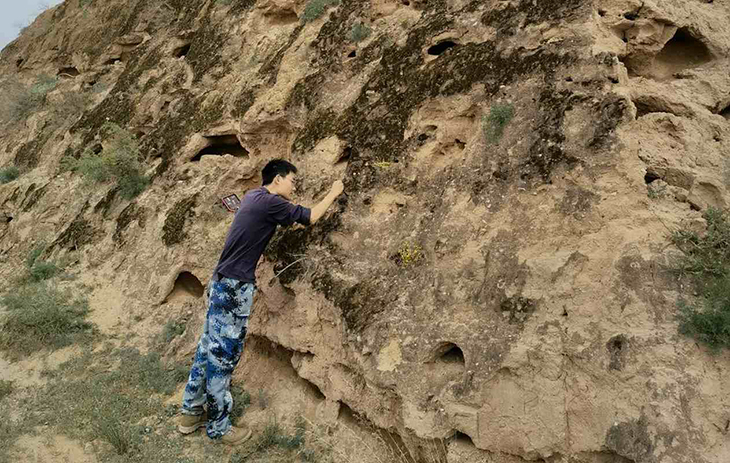
Centuries ago, the Great Wall of China served as a formidable defense against nomadic invaders, such as the Huns and ancestors of the Mongols, safeguarding the heartland of the North China Plain.
Today, a unique protector stands resilient on the wall, especially in areas where the monument remains incomplete: biological soil crusts.
These crusts, comprising lichen, moss and cyanobacteria, create a crusty surface layer on loose soil, playing a crucial role in arid ecosystems. In Northern China, they have emerged as the unsung heroes guarding sections of the Great Wall against the erosive forces of wind and water, even as unfinished portions of this iconic structure gradually deteriorate.
To comprehend the impact of these soil crusts on the Great Wall, scientists selected a 300-mile-long section for detailed analysis. The Great Wall, constructed in various stages over hundreds of years, witnessed the use of different building materials. During periods of prosperity, brick and mortar were employed, while in more remote or challenging terrains, rammed earth became the construction material of choice.
Rammed earth, a blend of mud, gravel, and other natural elements compacted similarly to the ground’s surface, has provided an ideal environment for the flourishing of biological soil crusts. The study revealed that these crusts covered an impressive 67% of the sampled areas on the rammed earth sections of the wall.
The authors of the study wrote in the journal Science Advances, “Compared with bare rammed earth, the biocrust-covered sections exhibited reduced porosity, water-holding capacity, erodibility, and salinity by 2 to 48%, while increasing compressive strength, penetration resistance, shear strength, and aggregate stability by 37 to 321%.”
In many desert parks across the United States, visitors are cautioned to avoid patches of lumpy dark Earth along trails. These patches signify biological soil crusts, which play a vital role in maintaining fertility in desert environments by preventing sandy soil from being carried away by the wind. Astonishingly, without this diminutive phenomenon, approximately half of the Earth’s soil, around 700 million metric tons of dust annually, would be blown into the oceans.
Researchers from the University of Almeria in Spain estimate that 25% of the soil in all the world’s drylands is covered by these biocrusts. The significance of these small colonies extends further, as some scientific propose that they prevent an amount of dust equivalent to all human-created atmospheric aerosols, and three times as much as humans release into the atmosphere through land-use changes.
However, the resilience of biological soil crusts contrasts with their vulnerability to human interference. While it takes over 50 years for these crusts to form, a mere second of a heavy hiking boot can undo their intricate structure. Hence, the conservation of these natural protectors is crucial, emphasizing the need for careful steps in delicate ecosystems.
What are your thoughts? Please comment below and share this news!
True Activist / Report a typo


